Abstract
The influence of previous BCG vaccination on the bactericidal activity of isoniazid and rifampicin has been studied using serial counts of viable tubercle bacilli in the spleens and lungs of mice and guinea-pigs infected intravenously with M. tuberculosis, strain H37Rv. In mice, BCG vaccination decreased the bactericidal activity of isoniazid in the spleen, but did not affect its activity in the lungs, where immunity is less strongly expressed. BCG did not influence the bactericidal activity of rifampicin in either organ. In contrast, previous BCG vaccination in the guinea-pig increased the bactericidal activity of isoniazid and rifampicin in the spleen and lungs. The differences between the animal species might result from the immune response being mainly bacteriostatic in the mouse but bactericidal in the guinea-pig.
Full text
PDF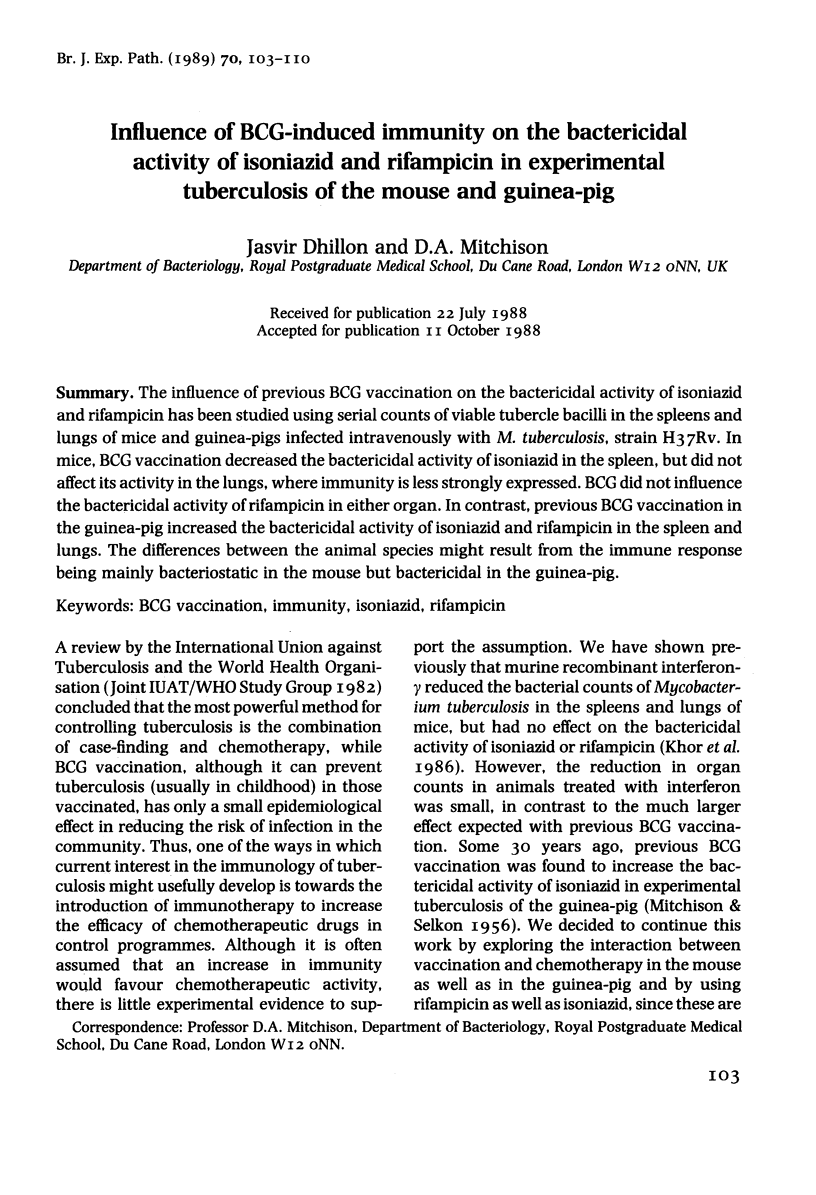
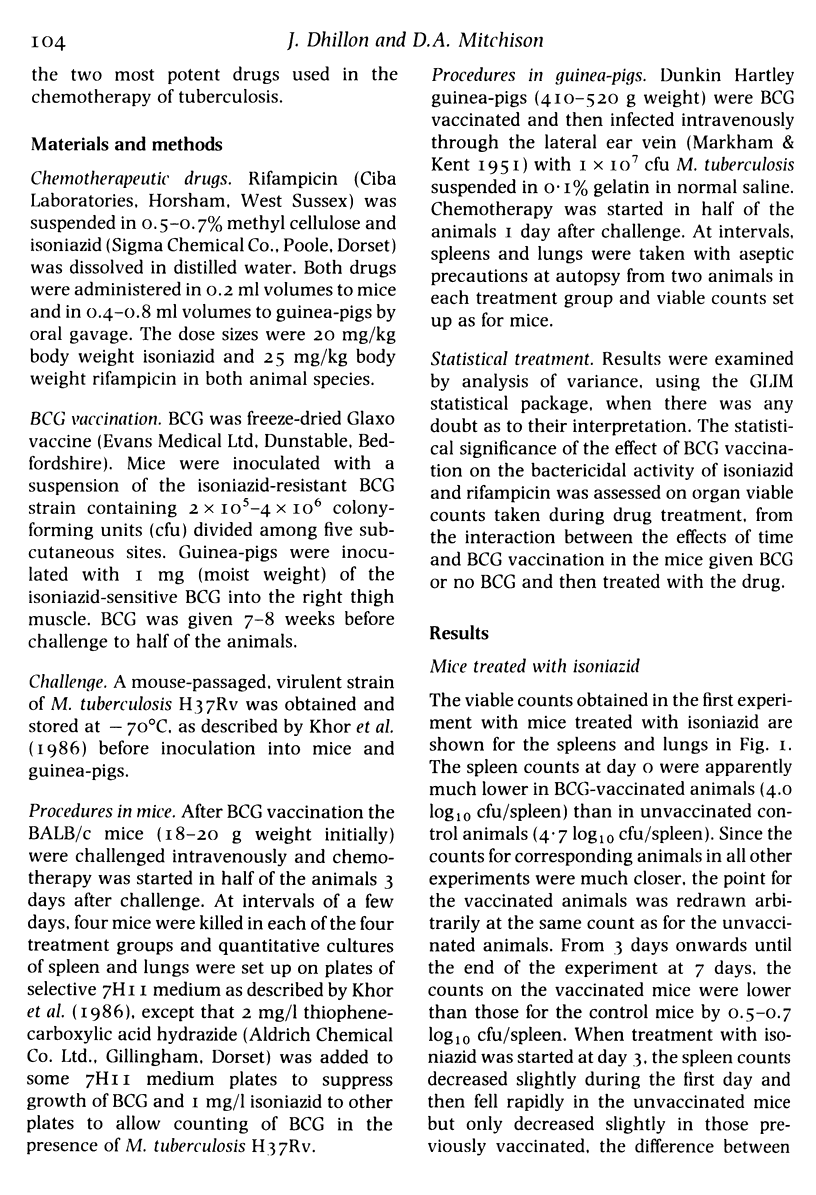
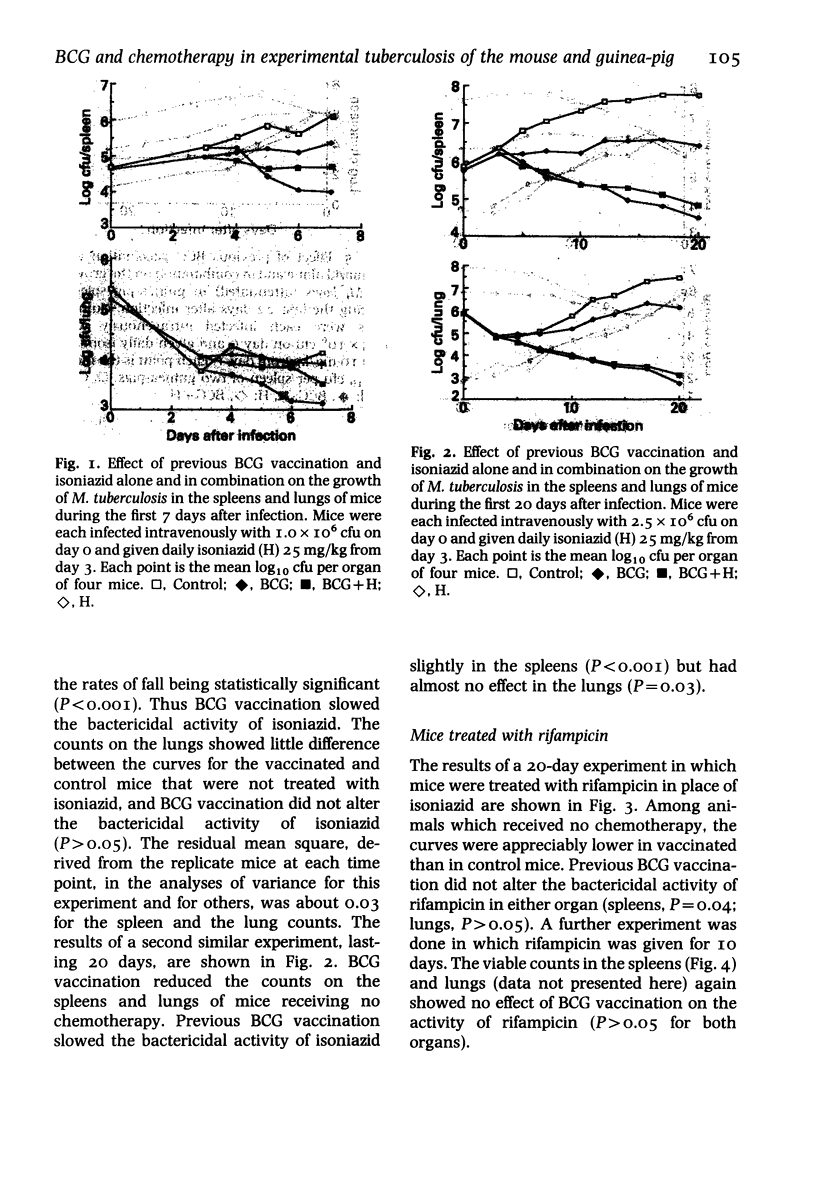
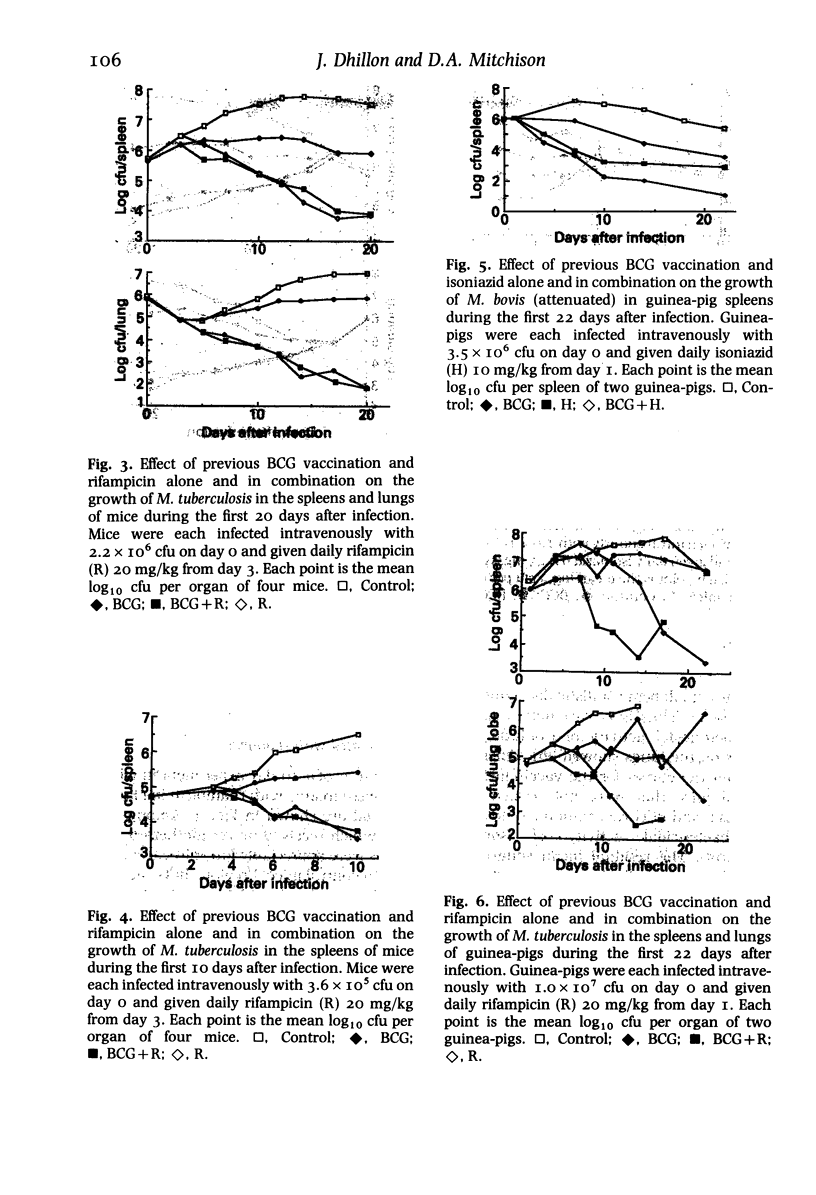
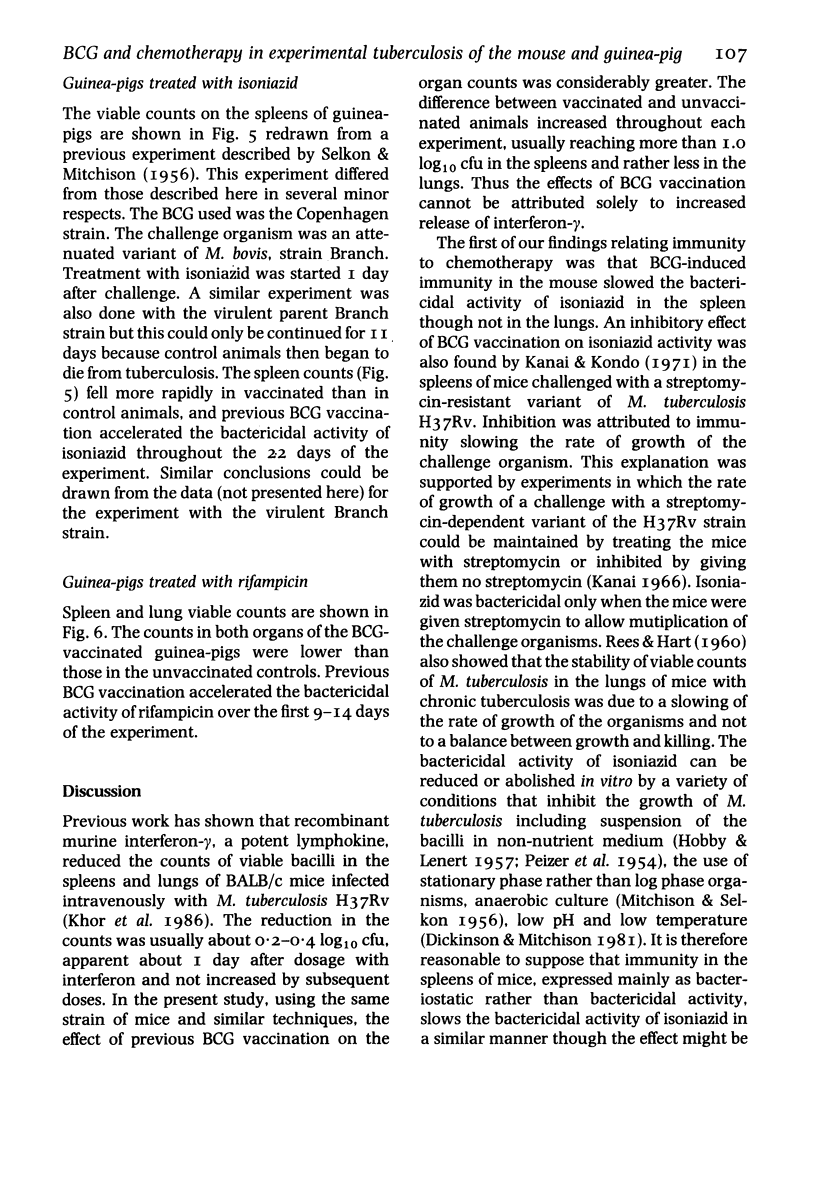


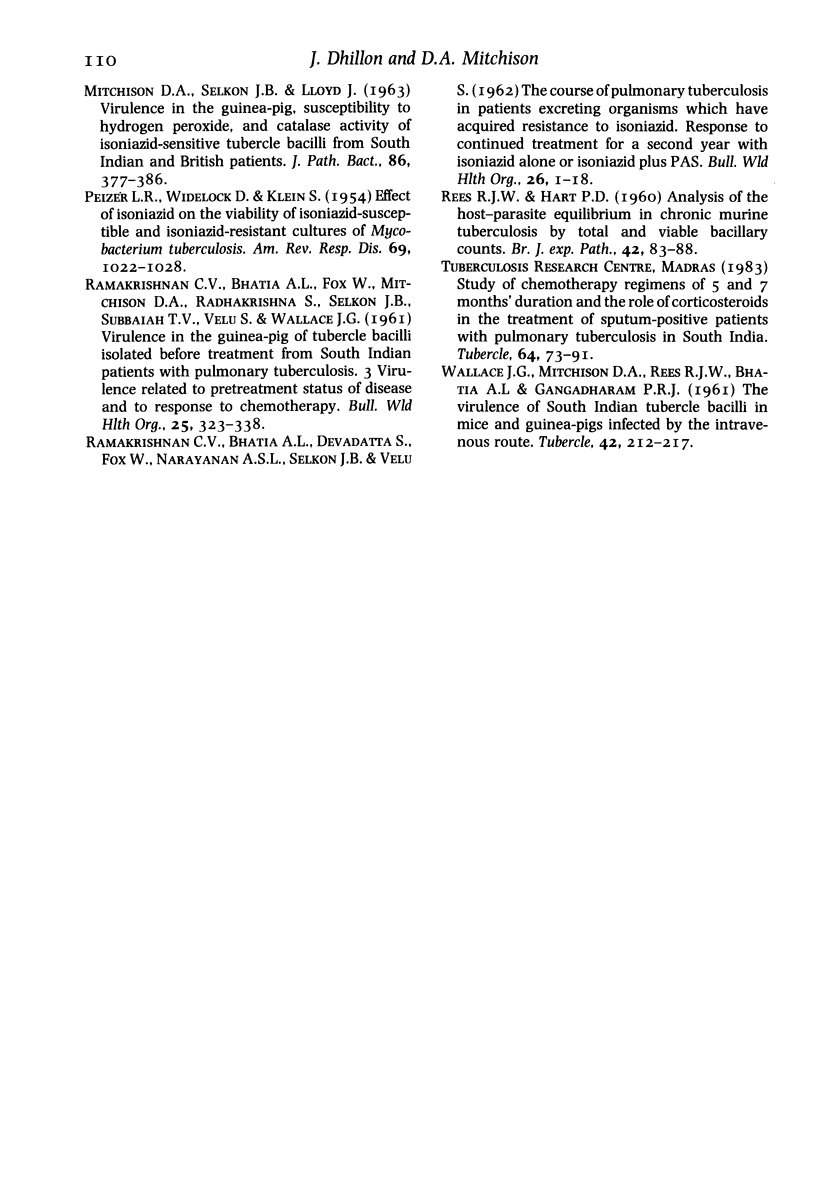
Selected References
These references are in PubMed. This may not be the complete list of references from this article.
- COLEMAN C. M., MIDDLEBROOK G. The effects of some sulfhydryl compounds on growth of catalase-positive and catalase-negative tubercle bacilli. Am Rev Tuberc. 1956 Jul;74(1):42–49. doi: 10.1164/artpd.1956.74.1.42. [DOI] [PubMed] [Google Scholar]
- Dickinson J. M., Mitchison D. A. Experimental models to explain the high sterilizing activity of rifampin in the chemotherapy of tuberculosis. Am Rev Respir Dis. 1981 Apr;123(4 Pt 1):367–371. doi: 10.1164/arrd.1981.123.4.367. [DOI] [PubMed] [Google Scholar]
- HOBBY G. L., LENERT T. F. The in vitro action of antituberculous agents against multiplying and non-multiplying microbial cells. Am Rev Tuberc. 1957 Dec;76(6):1031–1048. doi: 10.1164/artpd.1957.76.6.1031. [DOI] [PubMed] [Google Scholar]
- Lowrie D. B., Andrew P. W. Macrophage antimycobacterial mechanisms. Br Med Bull. 1988 Jul;44(3):624–634. doi: 10.1093/oxfordjournals.bmb.a072272. [DOI] [PubMed] [Google Scholar]
- MITCHISON D. A., SELKON J. B., LLOYD J. VIRULENCE IN THE GUINEA-PIG, SUSCEPTIBILITY TO HYDROGEN PEROXIDE, AND CATALASE ACTIVITY OF ISONIAZID-SENSITIVE TUBERCLE BACILLI FROM SOUTH INDIAN AND BRITISH PATIENTS. J Pathol Bacteriol. 1963 Oct;86:377–386. doi: 10.1002/path.1700860213. [DOI] [PubMed] [Google Scholar]
- MITCHISON D. A. THE VIRULENCE OF TUBERCLE BACILLI FROM PATIENTS WITH PULMONARY TUBERCULOSIS IN INDIA AND OTHER COUNTRIES. Bull Int Union Tuberc. 1964 Sep;35:287–306. [PubMed] [Google Scholar]
- RAMAKRISHNAN C. V., BHATIA A. L., FOX W., MITCHISON D. A., RADHAKRISHNA S., SELKON J. B., SELKON J. B., SUBBAIAH T. V., VELU S., WALLACE J. G. The virulence in the guinea-pig of tubercle bacilli isolated before treatment from South Indian patients with pulmonary tuberculosis. 3. Virulence related to pretreatment status of disease and to response to chemotherapy. Bull World Health Organ. 1961;25:323–338. [PMC free article] [PubMed] [Google Scholar]
- REES R. J., HART P. D. Analysis of the host-parasite equilibrium in chronic murine tuberculosis by total and viable bacillary counts. Br J Exp Pathol. 1961 Feb;42:83–88. [PMC free article] [PubMed] [Google Scholar]


